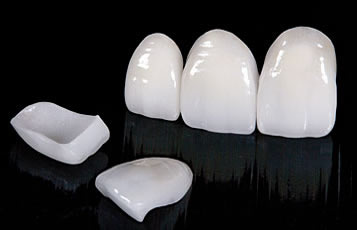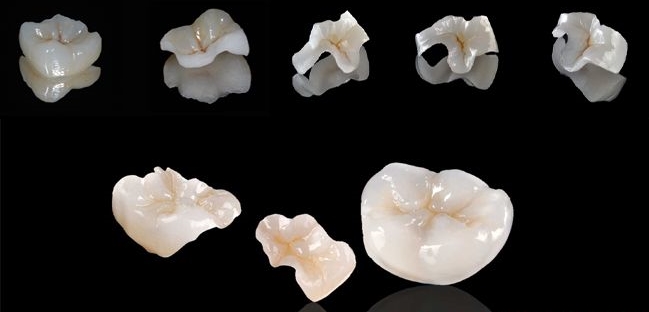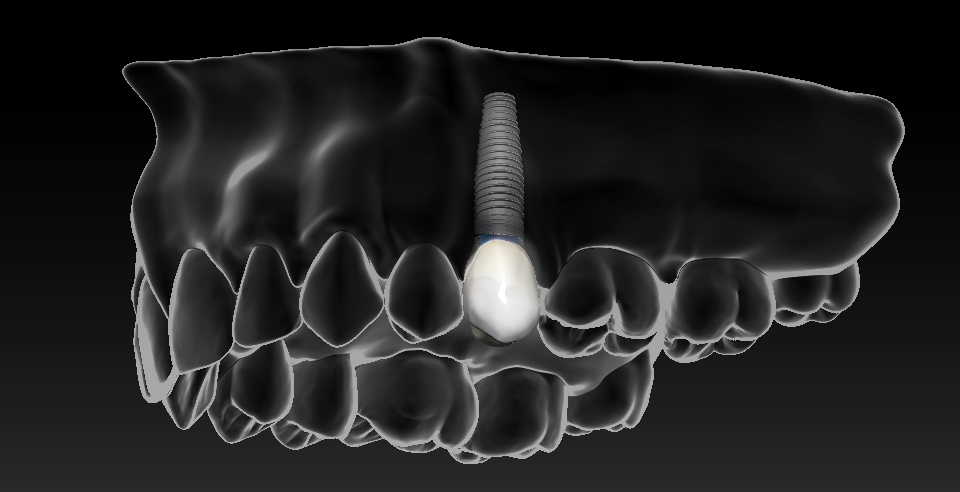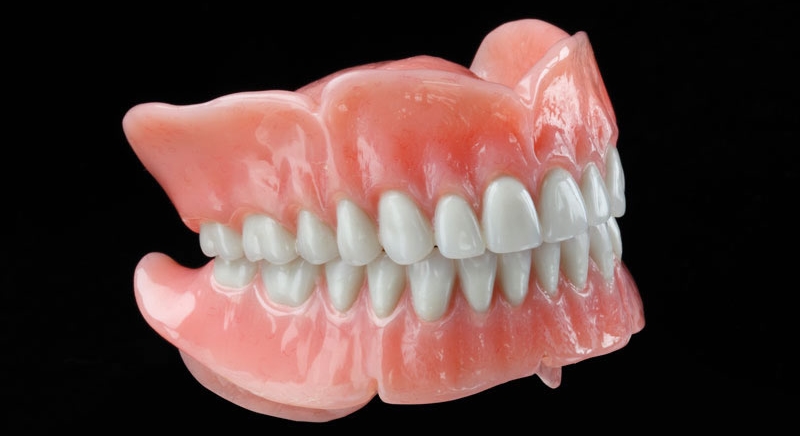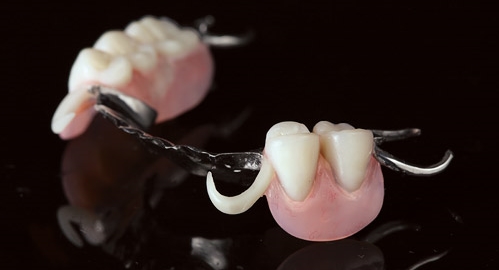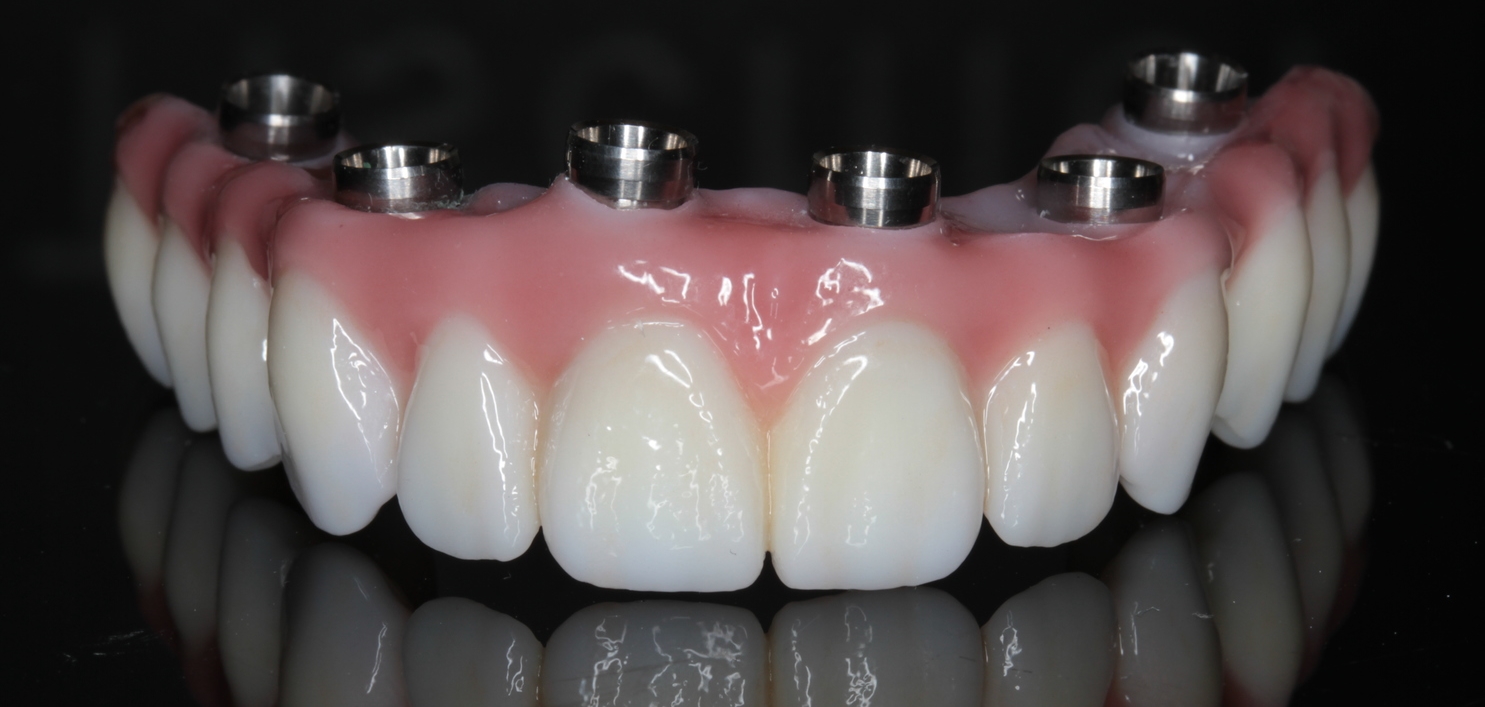Bonding
Bonding has a few ways it can be used. It can be used to attach tooth colored filling material to your teeth. Veneers are attached to your teeth using this technique. Some crowns have their best chance for long-term success when they are bonded to your teeth. Your prosthodontist will need to take great care to prevent your saliva from interfering with the process.
Bridges
A fixed bridge technique has been used with high success for many years. Teeth on both side of the missing space are prepared for a crown. Then a false tooth is joined to the crowns, and the entire bridge is cemented to the prepared teeth. The patient cannot remove the bridge, and special aids are available to keep it clean. In the appropriate circumstance, a fixed bridge can be a viable alternative to a dental implant.
Caps and Crowns
Crowns cover or "cap" a tooth to restore the normal function and appearance of the tooth. Crowns may be made as all metal, porcelain fused to metal, or all-ceramic (porcelain). Crowns are indicated for teeth with very large fillings, teeth that have had a root canal, fractured teeth, worn teeth and misshapen and/or discolored teeth.
Composites
Dental composites are a tooth-colored material commonly used as a filling material. It can be a way to build, reshape or change the color of teeth. This material can be used to conservatively alter the appearance of teeth as well as fill in places where cavities have been removed.
Cosmetic Dentistry
Cosmetic dentistry consists of any dental work that improves the appearance of a person’s teeth, gums, or smile. Depending on the patient’s desires, cosmetic dentistry may range from simple teeth whitening to bonding to porcelain veneers to full mouth restoration.
The American Dental Association recognizes nine dental specialties. Prosthodontists are the only ADA-recognized dental specialists with formal training in creating beautiful smiles. Visit with your prosthodontist to determine the best cosmetic dentistry procedures for your smile.
Dentures
Dentures are removable replacements for missing teeth. Complete dentures replace all teeth and removable partial dentures replace some teeth. By matching each individual’s unique smile and bite, dentures can improve facial appearance and self-confidence. Dentures may also improve speech problems caused by missing teeth and will improve chewing.
Digital X-Rays
Digital X-rays use low levels of radiation and an electronic sensor to create a black and white picture of the teeth and surrounding bone. Digital imaging is a relatively new technology in dentistry and offers features that enhance the viewing of any problem areas. The images are displayed almost instantly on a computer screen and are stored in the computer allowing easy electronic transmission. Like traditional dental x-rays, digital x-rays are used inside the mouth to examine the teeth, the jaw-bone and dental restorations.
Dental x-rays, including digital x-rays, play an important role in the diagnosis of decay and failing crowns and fillings, the correct placement of dental implants, and the proper treatment of teeth requiring root canals. Digital x-rays are utilized to help with evaluation of the upper and lower jaws, the sinuses, and the temporomandibular joints. All dental x-rays, including digital x-rays, use very low levels of radiation and are very safe. Protective lead aprons can be used to cover various body parts x-rays are taken.
Esthetic Restoration
Esthetic restorations can help you achieve a more natural-looking smile and improve your teeth’s natural beauty and strength. Prosthodontists can replace stained, chipped, missing or worn teeth with inlays, crowns, veneers, bridges, and implants using the most advanced esthetic restorations to bring back your beautiful smile.
Fillings
Dental fillings replace lost tooth structure due to dental decay or fracture of the tooth. In advanced cases of lost tooth structure, porcelain or gold crowns and onlays may be required. In simple cases, the missing tooth structure can be replaced with dental fillings using composites or amalgam.
Flouride & Flouridation
Fluoride decreases dental decay. Since 1945, the U.S. Government has advocated the controlled addition of fluoride to public drinking water. In small amounts, ingested fluoride seems to strengthen the enamel while it is being formed in young children or pregnant women. Recommended levels of fluoride in water should range from 0.5mg – 1.0mg per liter of water with 0.7mg per liter as optimal.
In rare cases, extreme excesses of fluoride in water will change the appearance of the enamel, making permanent teeth look discolored and pitted. Applying fluoride to the teeth in the form of toothpaste or gels helps prevent tooth decay and can also decrease the sensitivity of exposed root surfaces.
Full Mouth Reconstruction
People with severe dental problems are candidates for a full mouth reconstruction. As the name implies, full mouth reconstruction refers to rebuilding all of the teeth in a patient’s mouth. Full mouth reconstructions combine esthetics with the science of restorative dentistry to improve the health, function, and beauty of the smile. Crowns (caps), dental bridges, dental veneers and/or dental implants may be used in a full mouth reconstruction. In some patients orthodontics may also be employed to help properly position the jaw and align the teeth.
Implants
Dental implants are metal cylinders made of titanium surgically placed in the jawbone where teeth are missing. Implants replace the roots of missing teeth and support single crowns, large bridges and dentures. State-of-the-art technology makes it possible for these implant-supported replacement teeth to look, feel and function like natural teeth.
There are many types of dental implants and many ways to use dental implants to achieve your goals of a pleasing smile and good chewing function. Visit with your Prosthodontist to find out how dental implants can improve your life.
Inlays/Onlays
Traditionally, inlays were used instead of fillings to replace a small amount of tooth structure loss due to decay. Like fillings, inlays fit inside the tooth and were made only of gold. Today inlays are still used in the same situations, but the inlays can be made of a tooth-colored material such as ceramic/porcelain or special dental composite. Defective or unsightly “fillings” can be replaced by tooth-colored inlays and bonded to the tooth. This bonding process may actually improve the strength of the tooth and help seal the inlay to the tooth.
Onlays also fit inside the tooth, but extend onto the chewing surface of a back tooth to replace one or more cusps. In the past, onlays were made only of gold, but like inlays, more and more patients request a tooth-colored onlay. Making the onlay of ceramic/porcelain allows the restoration to be bonded to the tooth. This bonding process may actually improve the strength of the tooth and help seal the onlay to the tooth.
It is difficult to determine when inlays or onlays can be used instead of crowns or caps. Ask your prosthodontist if you are a candidate for a tooth-colored inlay or onlay.
Removable Partial Dentures
For patients missing several teeth, but not all of their teeth, a removable partial denture may be recommended. This type of denture uses the remaining teeth to hold or anchor the removable bridge in place. There are many different types and designs for removable partial dentures.
Typically, a removable partial denture is made of a metal framework with pink plastic to replace the gum tissue and plastic or resin denture teeth. The number of missing teeth and their location will affect the comfort and stability of the removable partial denture. The use of dental implants may increase the stability of a removable partial denture, or dental implants may be the best solution for replacing the missing teeth.
Consult a prosthodontist to determine if a removable partial denture will satisfy your needs. A prosthodontist can offer you many designs for your removable partial denture or provide other alternatives to consider including dental implant-supported crowns and bridges.
Sealants
When a tooth is overly sensitive to cold or sweets the exposed tooth can be sealed. Sealants can microscopically bond to the exposed tooth and a prosthodontist can help remove the painful symptoms.
Smile Makeover
Many patients are unhappy with the appearance of their teeth and want a “smile makeover”. Often patients want “perfect” bright white teeth, but this type of smile makeover usually looks artificial and unnatural. What patients are truly seeking is a satisfying and esthetic enhancement of their smile that also retains a natural healthy appearance of their gums.
A prosthodontist has completed advanced training in the restoration of teeth to their natural form, color and function, and the ADA recognizes prosthodontists as specialists in this field, including smile makeovers. Visit with your prosthodontist about using dental veneers, bonding, tooth bleaching, crowns/caps to give you the smile makeover you desire.
Teeth Brightening and Whitening
Many products are now available for patients to whiten their teeth. These products include commercially available strips; custom fabricated trays with a bleaching gel; or bleaching in a dental office using UV light or laser as the catalyst. There are limitations to these products. Visit with your prosthodontist to determine the best teeth brightening and whitening procedures for you.
Veneers
Porcelain veneers are used to modify the shape and color of teeth. Veneers are thin shells of porcelain that are etched and then bonded to the enamel of the teeth. A small amount of tooth structure must be removed to make room for the porcelain veneer and to avoid making the tooth look big and bulky. The tooth preparation is limited to the enamel and usually involves only a few surfaces of the tooth, unlike a crown or cap. A prosthodontist uses porcelain veneers to improve the appearance of teeth and to even close spaces or gaps between teeth.


